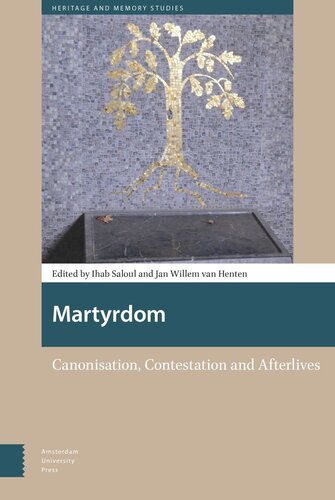

Most ebook files are in PDF format, so you can easily read them using various software such as Foxit Reader or directly on the Google Chrome browser.
Some ebook files are released by publishers in other formats such as .awz, .mobi, .epub, .fb2, etc. You may need to install specific software to read these formats on mobile/PC, such as Calibre.
Please read the tutorial at this link: https://ebookbell.com/faq
We offer FREE conversion to the popular formats you request; however, this may take some time. Therefore, right after payment, please email us, and we will try to provide the service as quickly as possible.
For some exceptional file formats or broken links (if any), please refrain from opening any disputes. Instead, email us first, and we will try to assist within a maximum of 6 hours.
EbookBell Team

5.0
100 reviewsThe phenomenon of martyrdom is more than 2000 years old but, as contemporary events show, still very much alive. This book examines the canonisation, contestation and afterlives of martyrdom and connects these with cross-cultural acts and practices of remembrance. Martyrdom appeals to the imagination of many because it is a highly ambiguous spectacle with thrilling deadly consequences. Imagination is thus a vital catalyst for martyrdom, for martyrs become martyrs only because others remember and honour them as such. This memorialisation occurs through rituals and documents that incorporate and re-interpret traditions deriving from canonical texts. The canonisation of martyrdom generally occurs in one of two ways: First, through ritual commemoration by communities of inside readers, listeners, viewers and participants, who create and recycle texts, re-interpreting them until the martyrs ultimately receive a canonical status, or second, through commemoration as a means of contestation by competing communities who perceive these same people as traitors or terrorists. By adopting an interdisciplinary orientation and a cross-cultural approach, this book goes beyond both the insider admiration of martyrs and the partisan rejection of martyrdoms and concisely synthesises key interpretive questions and themes that broach the canonised, unstable and contested representations of martyrdom as well as their analytical connections, divergences and afterlives in the present.